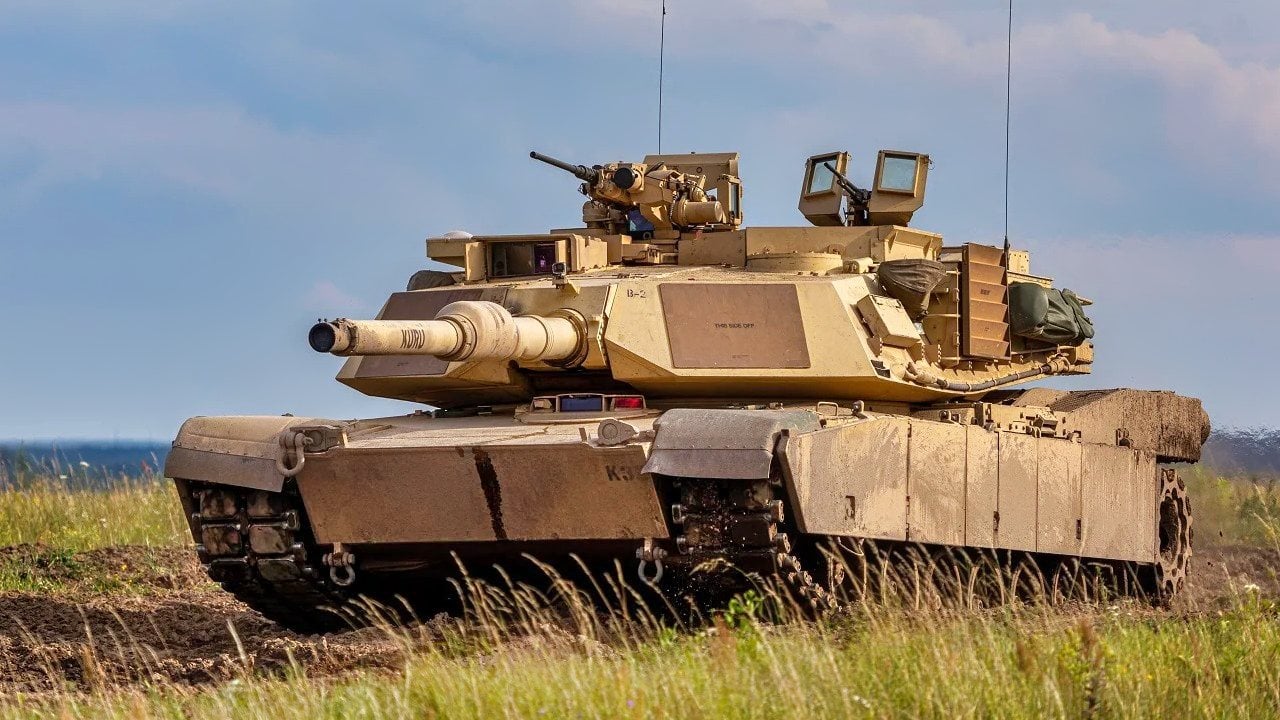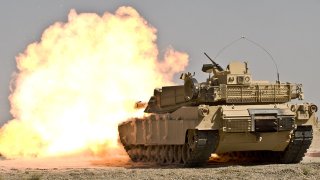Battle of 73 Easting: The Last Truly Epic Tank Battle
The Battle of 72 Easting is truly the last big tank battle waged in decades. And it was a big American victory for several clear reasons.
Battle of 73 Easting, Explained - Ever since Vladimir Putin’s “special military operation” in Ukraine began, there have been constant stories about his main battle tanks (MBTs) getting killed left and right.
However, the Ukrainian defenders have primarily been killing the Russian MBTs with weaponry such as HIMARS rocket artillery, Bayraktar drones, and man-portable anti-tank missile launchers such as the NLAWS and Javelin.
In other words, these two former Soviet Republics aren’t yet seeing any epic tank vs. tank battles along the lines of the Battle of Kursk.
So if you’re looking for the last truly epic tank battle in history, you must instead look to the Persian Gulf War AKA Operation Desert Storm…more specifically the Battle of 73 Easting on 26-27 February 1991, which was later described by participant Lt. John Mecca as “the last great tank battle of the 20th century.”
The Contenders Part I: M1 Abrams Brief History and Specifications
America’s go-to MBT for this monumental clash was the M1 Abrams, which still remains the mainstay tank of the U.S. Armed Forces 43 years after first entering into operational service, and will soon become a welcome addition to the Ukrainian Ground Forces as well.
Designed by Chrysler Defense (now General Dynamics Land Systems) from 1972 to 1975, and named for General Creighton Abrams, roughly 10,400 Abrams tanks in all variants have been built since the production phase began in 1979.
The variant used during the Gulf War was the M1A1, which weighed in at 63 tons, had a hull length of 26.02 feet, a width of 12 feet, a height of 8 feet, and packed an M256A1 120mm smoothbore main gun that tacked on an addition six feet to the overall length of the vehicle.
Boasting a maximum speed of 45 miles per hour on paved roads and 30 mph offroad, the M1A1 had a crew of four (commander, gunner, loader, and driver).
The Contenders Part Deux: T-72 Brief History and Specifications
Meanwhile, the Iraqi Republican Guards’ entrant into the battle was the Soviet-designed T-72, built by Uralvagonzavod, located in Nizhny Tagil, Russia. Design began in 1971, and production began in 1973, with approximately 25,000 in all variants built since then.
Since the Republican Guards were the cream of the crop of the Saddam Hussein-era Iraqi Army, they got the T-72s while the “conventional” Iraqi Army armored troops were stuck with obsolescent T-55s and T-62s.
The T-72 variants used herein were: (1) the T-72M export model, which only had a steel turret -- significantly reducing its protection levels compared to the Soviet domestic version -- and a thinner, more sloped front turret; and (2) the so-called “Lion of Babylon”, Iraq’s homegrown clone.
The latter version weighed 45.7 tons, had a hull length of 22 feet 10 inches (31 feet 3 inches when the 125mm 2A46M main gun was factored in), a width of 11 feet 9 inches, and a height of 7 feet 4 inches. Accommodating a 3-man crew, the Asad had a max speed of 37.28 mph on paved roads and 27.96 mph offroad.
The Contenders Part III: LTG Fred Franks Mini-Bio
Commanding the U.S. Army’s VII Corps was then-LTG Frederick Melvin Franks Jr., born on 1 November 1936 in West Lawn, Pennsylvania, West Point Class of 1959. Even before immortalizing himself via his legendary “Left Hook” maneuver against 14 Iraqi divisions during Desert Storm, he already made history as the first actively-serving amputee general officer in the U.S. Army since Union Maj. Gen. Daniel Sickles during the American Civil War.
The Contenders Part IV: Major-General Salah Aboud Mahmoud Mini-Bio
General Franks’ counterpart/nemesis at 73 Easting was Liwa/لواء (Major-General) Salah Aboud Mahmoud, who commanded the Iraqi Army III Corps. Little is known about General Mahmoud’s early life, other than that he was born in Baghdad sometime in 1942, began his military career in 1962, was appointed commander of III Corps in the wake of the Iran-Iraq War, and also part in the Battle of Khafji, Saudi Arabia on 29 January 1991.
Battle of 73 Easting
The showdown pitted 200-300 Coalition (UK 1st Armoured Division in addition to the aforementioned U.S. Army VII Corps) armored vehicles and 4,000 infantry troops against 300-400 Iraqi armored vehicles and 2,500 - 3,000 infantrymen. Long story short: it was a rout.
The Iraqis lost 160 tanks, 180 armored personnel carriers (APCs),and 600 - 1,000 troops killed and wounded, versus zero tanks, one M2 Bradley fighting vehicle, 6 KIA, and 19 WIA for the Americans.

A Veteran Who Fought In the Battle Explains
Well, part of it can be attributed to the superior armor, speed, and ballistic accuracy (including the ability to shoot on the move) of the Abrams. But there’s far more to it than that, as explained by my colleague Daniel L. Davis, now a retired LTC who had fought in that battle when he was a young 2LT:
“We were able to devastate the Iraqi T-72s during the Battle of 73 Easting for two compounding reasons. First, we as a squadron and regiment (of the 2nd Squadron, 2nd Armored Cavalry Regiment) had trained exhaustively for more than a year prior to Saddam Hussein invading Kuwait in August 1990, and then stepped it up another level from November when we were alerted for deployment through February shortly before we began the attack... Secondly, we were able to obliterate the Iraqi T72 and T55 tank force because the Iraqis were abysmally prepared. Their troops were barely trained. They had conducted virtually no training prior to the Battle of 73 Easting. Their maintenance practices were almost non-existent (many of their vehicles were inoperative on that day), their leaders had little maneuver experience, and of critical importance their gunnery skills were hideous (they couldn't hit the broad side of a barn).”
Where Are They Now
Liwa Mahmoud disappeared after Operation Iraqi Freedom kicked off in 2003 and his whereabouts remain unknown. Fred Franks retired in 1994 as a 4-star General after 35 years of honorable service and is now chairman of the board of the VII Corps Desert Storm Veterans Association.

About the Author
Christian D. Orr is a former Air Force Security Forces officer, Federal law enforcement officer, and private military contractor (with assignments worked in Iraq, the United Arab Emirates, Kosovo, Japan, Germany, and the Pentagon). Chris holds a B.A. in International Relations from the University of Southern California (USC) and an M.A. in Intelligence Studies (concentration in Terrorism Studies) from American Military University (AMU). He has also been published in The Daily Torch and The Journal of Intelligence and Cyber Security. Last but not least, he is a Companion of the Order of the Naval Order of the United States (NOUS).


